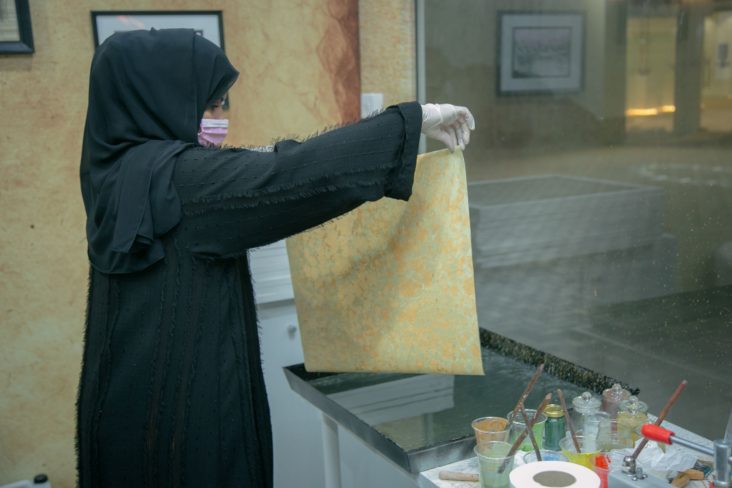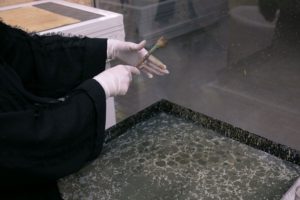Marbled Aesthetic Of Ebru Painting Ignites Curiosity At Sharjah Heritage Days

An Islamic decorative art that flourished in Turkey during the peak of the Ottoman period from the 14th to the 19th centuries is stirring interest and igniting the curiosity of visitors at the ongoing 18th edition of the Sharjah Heritage Days (SHD), currently underway at the Heart of Sharjah until April 10.
At the Sharjah Institute for Heritage Academic Management pavilion, experts from the Institute’sDepartment of Restoration of Documents and Manuscripts hold daily workshops in the fine art of Ebru, a Latin word for ‘painting on water’.
“During the Ottoman period, the marble-effect characteristic of Ebru was used to adorn the inner and outer covers of Islamic manuscripts,” explains Hasan Mamlouk, Head of the Department.“Only organic colours were used as synthetic materials could damage the valuable manuscripts.”
Experts at SIH continue this tradition, only using colours made from natural stones, minerals and soils.
The process of creating an Ebru painting begins 24 hours in advance when mineral water is mixed with Kitre, a natural gum, to attain the desired level of viscosity.“The glue is what causes the colour to float on water,” Mamloukelaborates.
“The next step is mixing the natural colour dyes with drops of cattle bile– this peculiar ingredient enables the colours to spread over water and prevents each colour from mixing with the other,” he adds.
Using a special brush, the artist then sprinkles colours over the surface of the prepared liquid. Instantly, the colours spread out in cloud-like patterns, and every new colour pushes out the others.
A long needle-like pin is used to manipulate the colours into the desired designs and patterns.
Hasan then slides a sheet of handmade silk or cotton paper over the water and the beautiful marble-effect design is transferred onto the paper.
“Each marbled paper is unique as the designs produced on the surface of the liquid and can be imprinted only on one sheet of paper,” he says.


